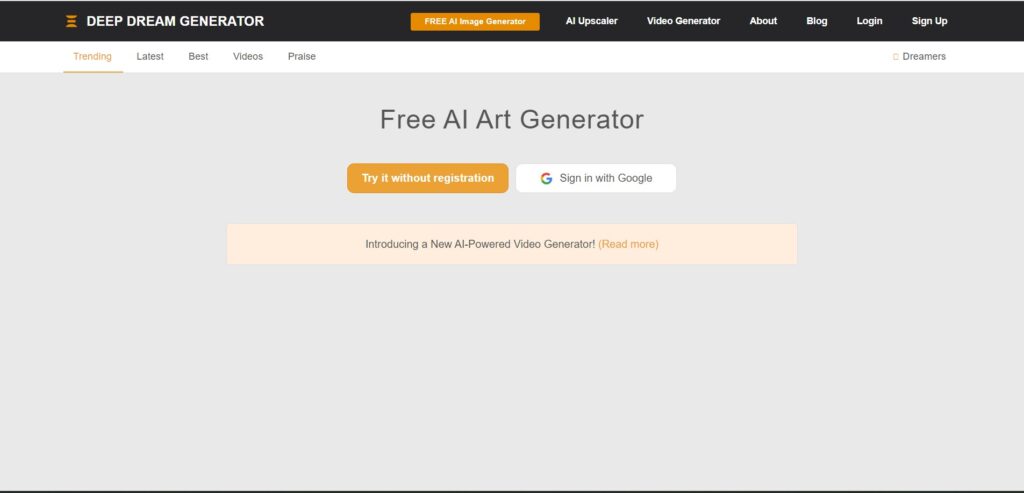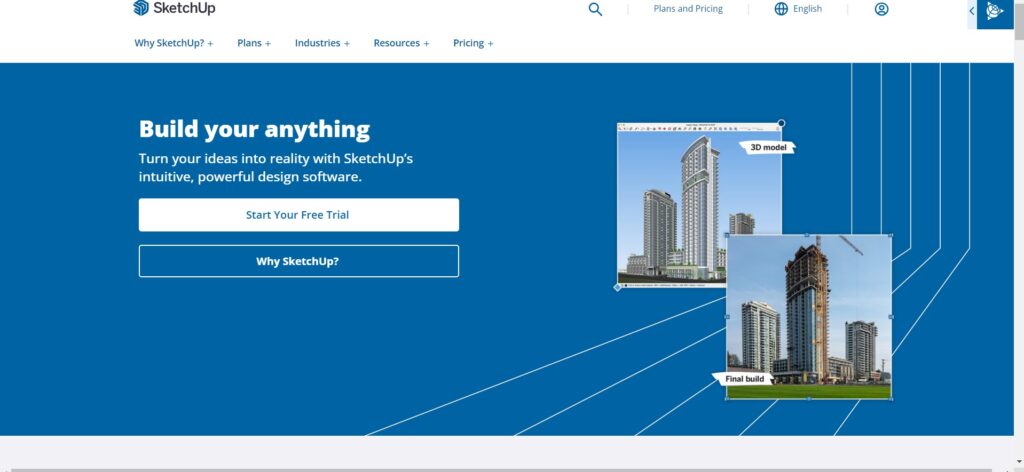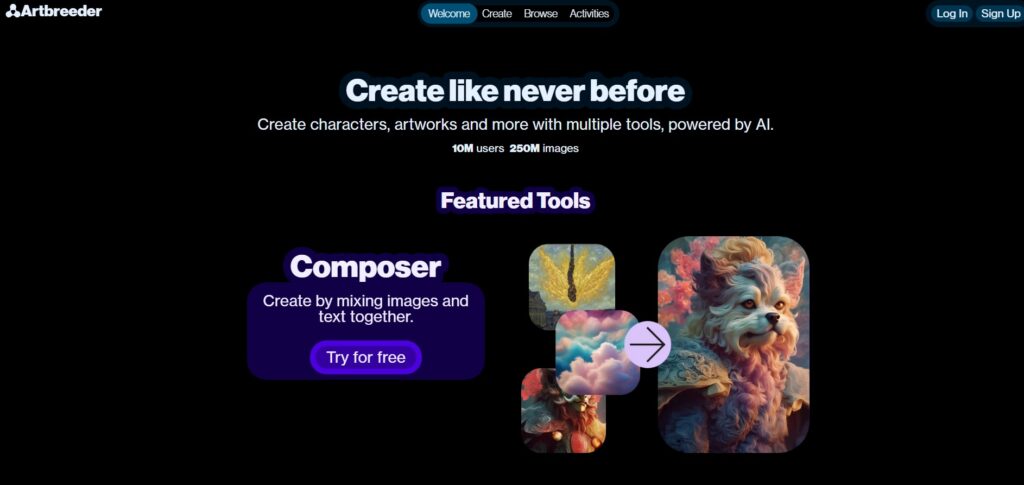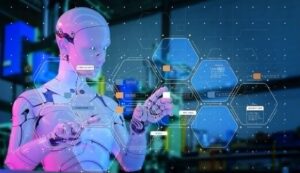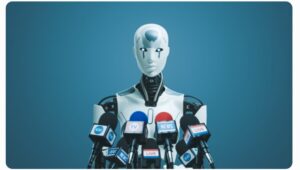AI 3D Model Generator
8+ AI 3d Model Generators From text or Image.
In an age where digital creativity knows no bounds, AI 3D model generators are emerging as game-changers in the fields of design, gaming, animation, and architecture.
These innovative tools harness the power of artificial intelligence to streamline the process of creating complex 3D models, making it easier and more accessible for both seasoned professionals and newcomers alike.
As someone who has navigated various creative projects, I’ve found these generators to be invaluable in enhancing productivity and unleashing creative potential.
Picture this: with a few intuitive commands, you can generate high-quality, customizable 3D models that would have once taken hours or even days to create. This incredible efficiency not only accelerates the design process but also inspires new ideas and experimentation.
In this article, I invite you to join me on a journey through the exciting world of AI 3D model generators. We’ll explore how they work, the myriad applications across various industries, and the game-changing benefits they bring to the table.
Get ready to unlock your imagination and dive into the limitless possibilities of 3D modeling!
1. Deep Dream Generator
Deep Dream Generator uses neural networks to generate artistic 3D models from images. By inputting a basic image, users can transform it into a complex 3D model with unique textures and designs.
Use Cases:
- Artistic Projects: Artists can create unique sculptures and 3D art pieces that combine traditional images with AI-generated enhancements.
- Concept Development: Designers can explore different artistic interpretations of their concepts, aiding in the brainstorming phase of projects.
- Game Development: Developers can use generated models as background elements or characters in game environments.
- Prototyping: Designers can quickly generate visual prototypes for client presentations.
- Augmented Reality (AR): Users can create AR experiences by generating 3D models from 2D images.
2. Runway ML
Runway ML is a powerful platform that leverages machine learning to facilitate creative projects, including 3D modelling. It provides tools for generating realistic 3D models and integrating them into various applications.
Use Cases:
- Film and Animation: Creators can develop 3D characters and assets for animated films and video projects.
- Virtual Reality (VR): Designers can generate immersive environments for VR experiences.
- Product Design: Companies can create detailed 3D representations of their products for marketing and presentation purposes.
- Interactive Media: Artists can incorporate AI-generated models into interactive installations and digital art.
- Educational Purposes: Educators can use generated models for teaching concepts in design, art, and technology.
3. NVIDIA GauGAN

NVIDIA GauGAN is an AI-powered tool that allows users to create 3D landscapes and environments from simple sketches. Its intuitive interface lets users draw basic shapes, which the AI then transforms into detailed 3D scenes.
Use Cases:
- Game Design: Developers can rapidly create game environments and landscapes for their projects.
- Architecture: Architects can visualise building designs and outdoor spaces using generated landscapes.
- Concept Art: Artists can generate background scenes for illustrations or storyboards.
- Marketing Materials: Marketers can produce visually appealing imagery for promotional content.
- Exploration and Planning: Urban planners can generate conceptual layouts for new developments.
4. Blender
While Blender is primarily known as a powerful 3D creation suite, it also incorporates AI tools and plugins that enhance the modelling process. Users can leverage AI-generated assets and enhancements within their projects.
Use Cases:
- Animation: Animators can create complex 3D animations with the help of AI-assisted tools.
- Visual Effects (VFX): VFX artists can generate realistic elements for films and video productions.
- 3D Printing: Designers can create and export models suitable for 3D printing.
- Architectural Visualisation: Architects can create detailed visualisations of their projects.
- Game Asset Creation: Developers can generate and manage 3D assets for game development.
5. Tinkercad
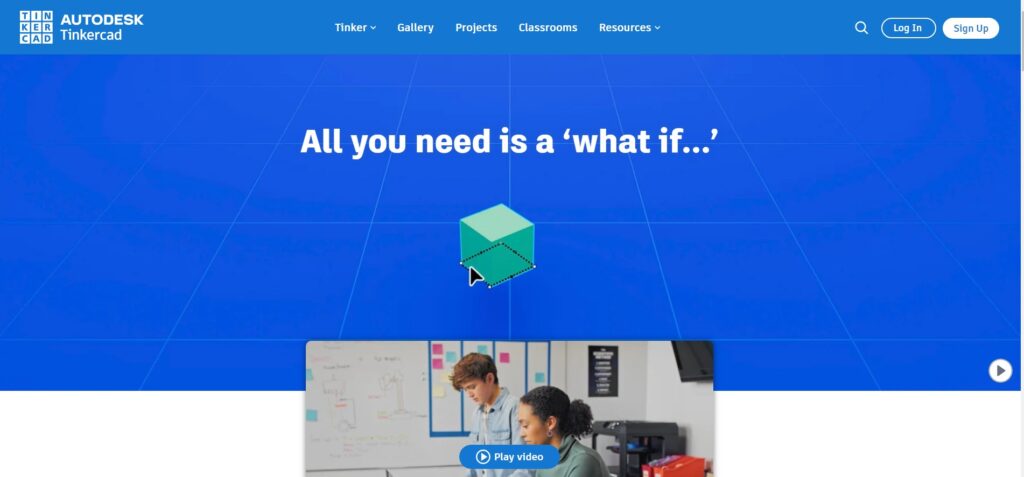
Tinkercad is a user-friendly online 3D design tool that incorporates AI features to simplify the modelling process. It allows users to create 3D models using basic shapes and tools, making it accessible for beginners.
Use Cases:
- Educational Projects: Teachers can use Tinkercad to introduce students to 3D modelling concepts.
- Prototyping: Designers can quickly develop prototypes for product ideas and test designs.
- DIY Projects: Hobbyists can create custom designs for personal projects or gifts.
- Community Sharing: Users can share their designs with the Tinkercad community for feedback and inspiration.
- 3D Printing: Individuals can prepare models for 3D printing, enabling tangible creation from digital designs.
6. 3DLOOK
3DLOOK uses AI to generate 3D models from 2D images, specifically focusing on body measurements and clothing fit. The technology captures body dimensions and produces accurate 3D representations.
Use Cases:
- Fashion Industry: Designers can create virtual fitting rooms for customers, enhancing the online shopping experience.
- E-commerce: Retailers can provide accurate size recommendations based on AI-generated models.
- Fitness Applications: Developers can create virtual avatars for fitness tracking and apparel recommendations.
- Custom Clothing: Tailors and designers can produce made-to-measure garments based on AI-generated body models.
- Marketing: Brands can utilise 3D body models in campaigns to showcase their clothing in a more relatable way.
7. Sculptris
Sculptris is a 3D sculpting tool that uses AI algorithms to assist users in creating detailed and intricate models. It is designed for artists looking to create organic shapes and structures.
Use Cases:
- Character Modelling: Artists can create detailed 3D characters for games and animations.
- Concept Art: Designers can use Sculptris to explore different shapes and forms for their concepts.
- 3D Printing: Users can prepare models for 3D printing, particularly for custom sculptures.
- Game Asset Creation: Developers can design unique models for use in gaming environments.
- Digital Art: Artists can produce expressive and intricate digital sculptures for portfolios.
8. SketchUp
SketchUp is a 3D modelling tool that incorporates AI features to enhance user experience and streamline the design process. It is widely used in architecture and interior design.
Use Cases:
- Architectural Design: Architects can create detailed building models and visualisations.
- Interior Design: Designers can plan and visualise spaces before actual implementation.
- Landscaping: Users can design outdoor spaces, including gardens and parks.
- Construction Planning: Builders can generate models for project planning and presentations.
- Education: Students can learn 3D design principles through hands-on experience with SketchUp.
9. Daz 3D
Daz 3D is a powerful 3D creation tool that focuses on character design and animation. It provides users with a vast library of pre-built 3D models, allowing for easy manipulation and customization.
With AI-driven features, users can generate detailed human figures, outfits, and accessories quickly.
Use Cases:
- Character Animation: Animators can create lifelike characters for films, video games, and virtual reality experiences.
- Illustration: Artists can generate characters for comic books, graphic novels, or visual storytelling.
- Digital Art: Designers can create stunning 3D art pieces that combine characters and environments.
- Virtual Reality: Developers can generate characters and assets for immersive VR applications.
- Training Simulations: Educators can use Daz 3D to create realistic scenarios for training purposes.
10. Artbreeder
Artbreeder is an innovative AI tool that allows users to blend images and create new visual content. While primarily known for 2D image manipulation, Artbreeder also supports the generation of 3D models by combining various artistic styles and designs.
Use Cases:
- Concept Art: Artists can create diverse character designs and environments by merging different styles and attributes.
- Game Design: Developers can quickly generate character assets for their games, enhancing creative efficiency.
- Artistic Exploration: Artists can experiment with blending techniques to discover unique visual elements for their projects.
- Community Collaboration: Users can share their creations and collaborate with others to refine designs further.
- Marketing Material: Marketers can generate visually appealing content for social media and advertising campaigns.
Conclusion:
These tools have transform the way we design, allowing us to turn abstract ideas into tangible realities with remarkable ease.
The efficiency and accessibility that AI brings to 3D modeling empower not just seasoned professionals but also aspiring creators who may have felt daunted by the complexities of traditional modeling techniques.
Throughout this journey, I’ve seen how these generators not only speed up the design process but also encourage experimentation and innovation. They allow us to push the boundaries of creativity, fostering collaboration across various disciplines—whether it’s gaming, architecture, product design, or beyond.
The potential to generate high-quality models in a fraction of the time means that more people can express their ideas and contribute to the ever-evolving landscape of digital design.
I encourage anyone interested in design—regardless of your skill level—to dive into this exciting realm. The tools are here to enhance your creativity and help you bring your visions to life in ways you never thought possible.

